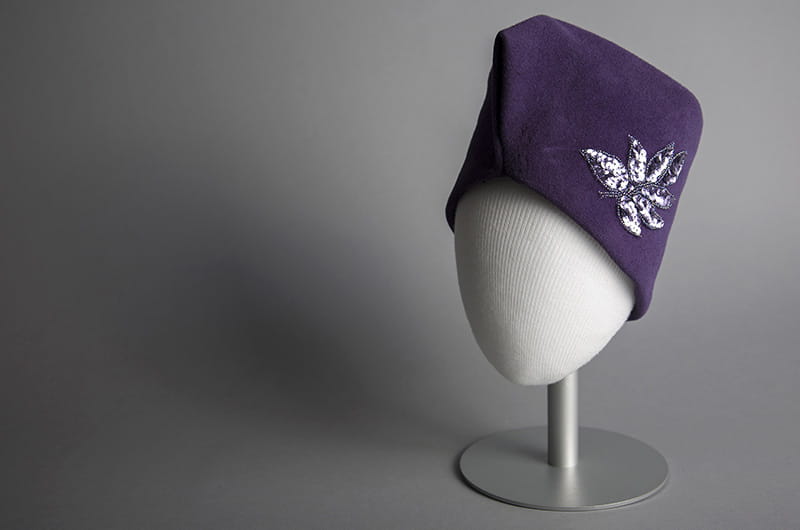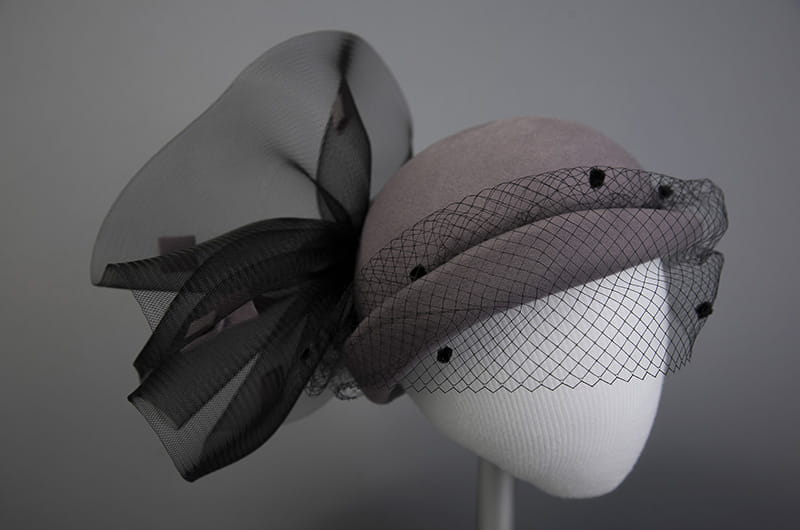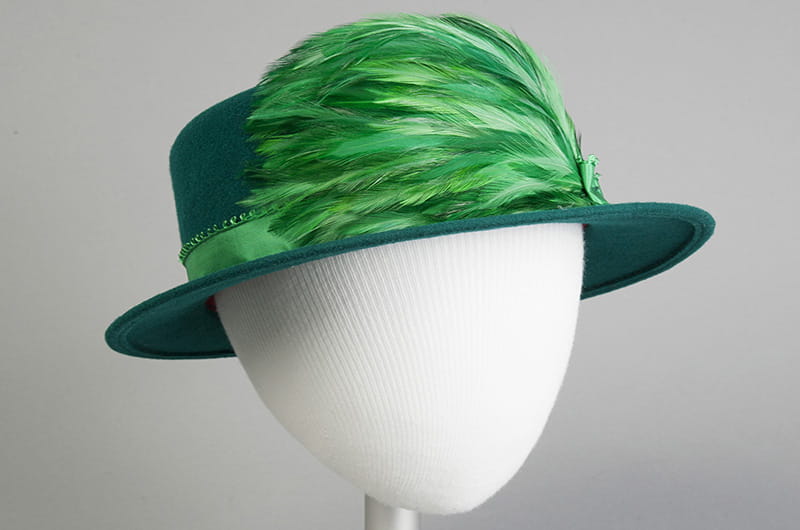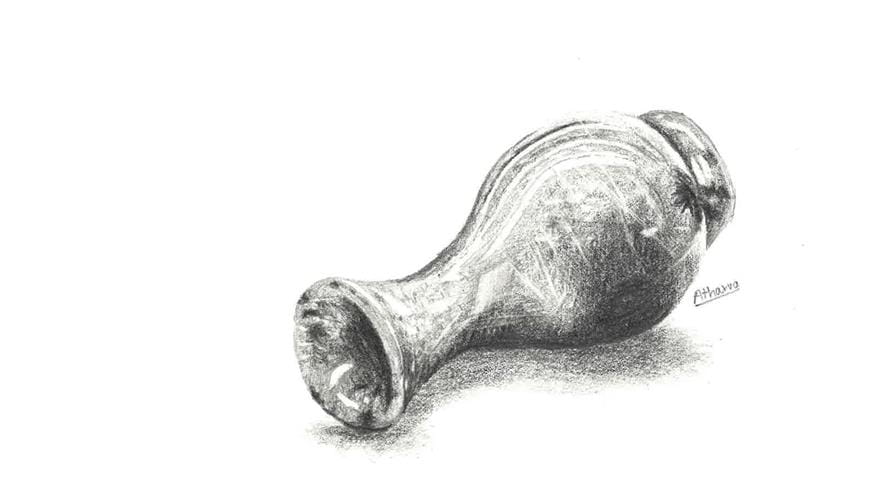Hidden Treasures: Drexel’s Mysterious Olivia Turner Hats

Several hats by a designer named Olivia Turner had been preserved in Drexel University’s Robert and Penny Fox Historic Costume Collection for a number of years now — and while the fabric and types of hats were known, most information about who, exactly, Olivia Turner was had been lost with the passing of time.
More light was shed on the hat designer thanks to Samihah Maven and Distinee McCormick, two local teenagers who completed a summer internship at Drexel University (and three of its archival and art collections) through the Triskeles Foundation and WorkReady Program. The goal was to learn enough about not only Turner, but also the ins and outs of conducting research and interviewing subjects for oral histories, and then compile that information in the best way to illustrate what they found. By the end of their six weeks on campus, Maven and McCormick had created a mock-up of an exhibit on Turner, who turned out to have worked primarily as a nurse with a hat-making side project, and her hats.
“Before this experience, I was interested in museums and doing exhibits, but I had no idea it could be so fun to be an archivist,” said McCormick, who has since started classes as a freshman at Kutztown University. “I didn’t know you could handle the things in the exhibits, like Olivia Turner’s hats. Being able to look at these old objects from years and years ago was really cool.”
Maven and McCormick worked with Drexel staff involved with three of the University’s major art and archival teaching collections: the Fox Historic Costume Collection, which documents and preserves the history of fashion; the Legacy Center Archives at the College of Medicine, which contains the archives of the historic medical schools that grew into Drexel’s College of Medicine, as well as general information about women in medicine; and The Drexel Collection, the University’s art collection, which was involved not because of art, but because its director, Lynn Clouser, is an expert on putting on exhibitions of various sizes and topics in The Drexel Collection’s two galleries and other spaces on campus.
When starting the research, Maven and McCormick had a few key details — names, dates and places — to use when researching Turner. But most importantly, they had curiosity, patience and determination — which was good, since they had a lot of hard work ahead of them.

As they found out, making hats was just one aspect of Turner’s life (though it was the aspect that landed her hats in the Fox Historic Costume Collection). Her primary source of income was through nursing, as she worked as a nurse (hence the Legacy Center’s research guidance) at West Philadelphia’s historic Mercy-Douglass Hospital for 50 years.
“My favorite part was all of that behind-the-scenes work,” said Maven, now a high school senior. “It was kind of frustrating, but I liked how we were able to figure out what it means to pull everything together for an exhibit. I’d never even heard of doing archive work or researching someone for an oral history project, and I really enjoyed getting to know these different career options.”
Michael Shepherd, an archivist in the Fox Historic Costume Collection, took them to the Free Library of Philadelphia and Temple University’s Charles L. Blockson Afro-American Collection to research Turner’s life through newspaper clippings (one 1960 Philadelphia Tribune article, for example, showed singer Dinah Washington wearing one of Turner’s hats). Shepherd also helped set up interviews with members of the Mount Carmel Baptist Church who knew Turner, who died in 2002 at age 88, as a longtime member and historian of the church.
“It was nice to involve a community that was so close to Drexel, since the Mount Carmel Baptist Church is just at 57th and Race streets,” said Shepherd. “None of the members we spoke to knew that Drexel had a historic costume collection or that we had Olivia Turner’s hats.”
Matt Herbison, an archivist in the Legacy Center, worked with the students to come up with good questions for conducting oral histories (which he regularly works with in his field). He also helped them with digging through boxes and boxes of files from the now-defunct Mercy-Douglass Hospital now housed in the University of Pennsylvania’s Barbara Bates Center for the Study of the History of Nursing.

“It was very rewarding to see how interested and intuitive high school students can be about something they’ve never thought of before,” he said. “If Distinee and Samihah had another couple of weeks to work on this project, they could have put even more things together.”
By the end of six weeks, Maven and McCormick had enough information to make an exhibition — although some key pieces of information were never found (Turner’s real name was actually B. Olivia Turner, though they still don’t know what the “B.” stood for or what her maiden name was).
“Distinee and Samiah were extremely hard-working,” said Shepherd. “Even on the days when we were doing stuff that can be frustrating even for people used to doing research all day, they stuck through it and got the job done.”
After gaining experience handling objects and reviewing past exhibition designs with Clouser in The Drexel Collection, Maven and McCormick created a mock-up of their proposed exhibition, filled the space with eight Olivia Turner hats, five panels with various biographical information, three display cases and one timeline of Turner’s life.
“Both Distinee and Samihah were very eager to learn about exhibition design and interpretation using all the research they did,” said Clouser. “They really applied themselves to the project, even though it was just a theoretical practice in exhibition design, and created an impressive and realistic exhibition plan that we can hopefully use in the future.”
Though theoretical, the exhibition represented the first time that the three Drexel collections, and the staff housed in those departments, had ever collaborated on a joint internship. Judging by all that Maven and McCormick accomplished during their professional work experience, the staff members hope that it won’t be their last time bringing in non-Drexel-affiliated people, including high school students involved with the WorkReady program, to see and work with their collections on campus.
This story was published in the fall 2017 issue of Drexel Quarterly.Drexel News is produced by
University Marketing and Communications.

